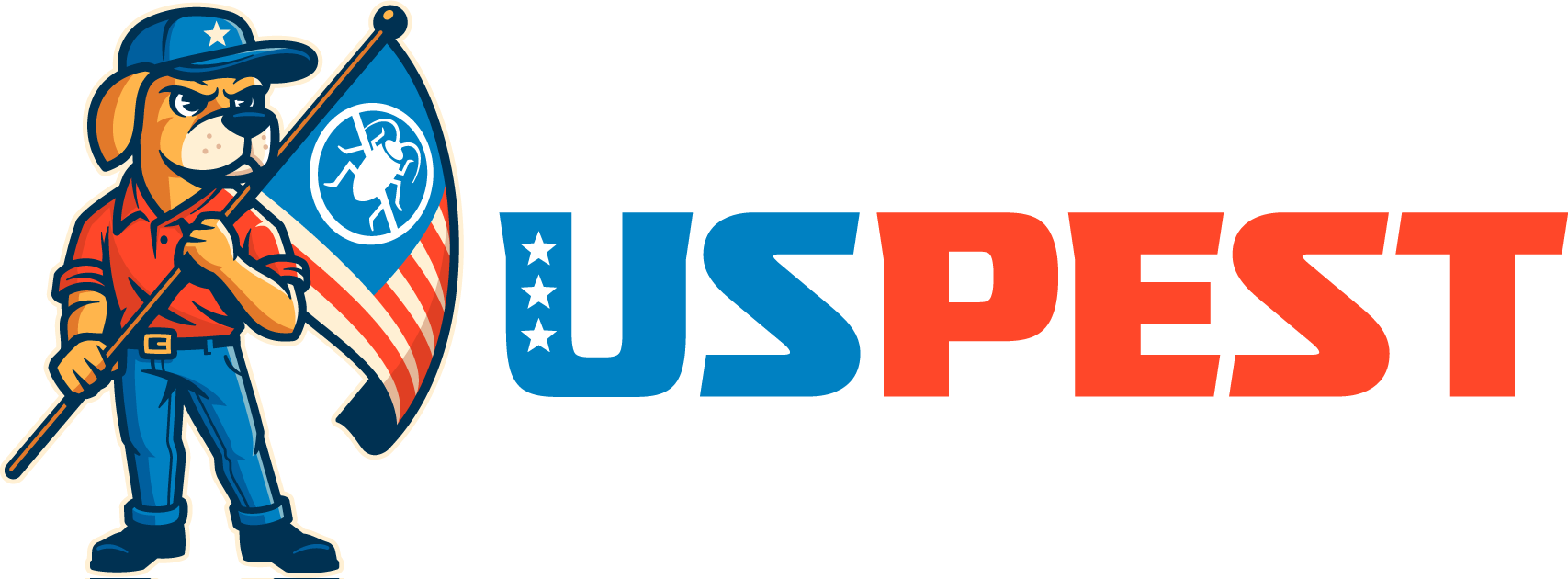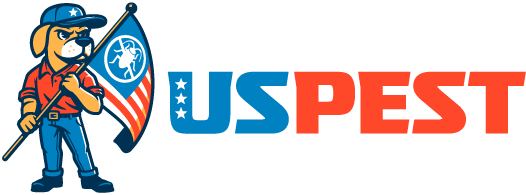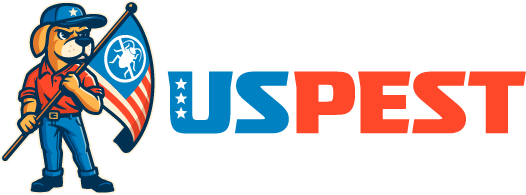What is a Crawl-Space Vapor Barrier?
A crawl-space vapor barrier is a heavy-duty plastic sheeting system installed on the dirt or soil floor of your home’s crawlspace. Its purpose is to intercept moisture vapor rising naturally from the earth into the crawlspace and ultimately into your home. At US Pest Control we install a 10-mil white polyethylene vapor barrier—durable, clean in appearance, and built to last—providing a long-term barrier between the ground beneath and your home’s structure.
Unlike simple vented or untreated crawlspaces, this system creates a moisture-resistant layer that, when properly installed and sealed, dramatically reduces the entry of water vapor, controls humidity, and helps preserve the integrity of your home.
Why It’s Essential for Homeowners in Central Virginia
Homes in the Richmond, Mechanicsville, Henrico and Chesterfield area sit on soils and experience climates where ground moisture and humidity are significant contributors to crawl-space and indoor-air issues. Without a robust vapor barrier system in place, the following risks become real:
• Moisture & Structural Risk
When moist soil vapors penetrate your crawlspace, that damp air rises and saturates joists, sub-flooring, insulation, ductwork, and other hidden components. Over time this can lead to wood‐rot, corroded metal supports, deteriorated insulation, and compromised sub-floors.
• Indoor Air-Quality Problems
Your crawlspace is not isolated — it influences the air your family breathes. Moist, mold-friendly conditions in the crawlspace can allow mold spores, allergens, musty odors, and even soil gases to enter your living space. Studies highlight that unsealed crawlspaces can degrade indoor air quality.
• Energy & Comfort Loss
A damp crawlspace acts like a hidden “leak” in your home’s environment. HVAC systems must work harder when floors are cold or humid and when crawl‐space air is uncontrolled. A properly installed barrier helps retain conditioned air above and reduce that load.
• Pest Attractant
Moisture attracts pests. Termites, carpenter ants, rodents, silverfish, centipedes, cockroaches and spiders find damp, dark, poorly controlled crawlspaces inviting. By reducing the moisture habitat, you reduce the likelihood of insect or rodent colonization beneath your home.
Benefits of Installing a Quality Vapor Barrier
By installing a professionally done vapor barrier system, you gain multiple layered benefits that protect your home both now and in the future:
1. Moisture Control & Structural Protection
- Stops rising soil vapors before they can saturate wood, insulation, and floor systems.
- Prevents decay of joists, beams and supports that are otherwise exposed to hidden dampness.
- Protects HVAC ductwork, plumbing, and metal components from corrosion by controlling ambient humidity.
2. Pest Prevention
- Dry environments are far less hospitable to termite and carpenter-ant tunneling, rodent nesting, silverfish, centipedes, and cockroaches.
- A sealed crawlspace limits that “hidden access point” for pests to move from outdoors/soil into your home’s structure.
3. Improved Energy Efficiency & Comfort
- Reduced thermal loss through the floor system because the crawlspace is less humid and more stable.
- Floors feel more comfortable (less cold or damp beneath you) and your HVAC system experiences less unconditioned air infiltration.
4. Better Indoor Air Quality
- Lower humidity and mold risk translate into fewer airborne spores, fewer musty odors, and healthier air for occupants.
- A dry crawlspace means less contribution to indoor relative humidity and less chance of moisture “cycling” into living areas.
5. Protection for Your Investment
- By maintaining the structural under-belly of your home, you preserve its value and reduce future costly structural or pest-damage repairs.
- Should you ever sell your home, a documented high‐quality crawlspace system adds credibility to your build-quality and maintenance history.
What Happens When You Don’t Install One?
If your crawlspace is simply left with exposed soil or only minimal venting, many hidden risks can accumulate:
- Elevated humidity in the crawlspace leads to mold growth, damage to insulation, and decay of wood structural members.
- Joists and sub-flooring can soften or become compromised under persistent dampness.
- Metal supports, fasteners, HVAC trunks, and plumbing can corrode over time.
- Pests find ideal conditions—termites, carpenter ants, rodents, silverfish, centipedes, cockroaches and spiders all flourish in damp crawlspaces.
- Indoor air quality suffers, as the air from the crawlspace mixes via stack‐effect into living areas, bringing musty smells, allergens, and even soil gas into your home.
- Energy bills rise because your HVAC system fights not just temperature control, but latent (moisture) load and uncontrolled air infiltration.
Specific Risks for the Richmond / Henrico / Chesterfield Region
In our local geographic area—Richmond, Mechanicsville, Henrico and Chesterfield counties—homes often face particular conditions:
- Seasonal humidity fluctuations, warmer summers, and occasional heavy rainfall mean soil moisture and vapor migration often exceed what basic ventilation alone can handle.
- Many older homes were built with vented crawlspaces and minimal vapor protection—meaning retrofitting a quality barrier significantly upgrades performance.
- Pest pressure (termites, carpenter ants, rodents) is real and persistent in our area—moist crawlspaces only make things easier for them.
Energy efficiency and indoor-air quality concerns are increasingly important in local markets—having a professionally sealed crawlspace becomes a differentiator.
Why Choose US Pest Control for Your Crawl-Space Vapor Barrier?
At US Pest Control, we don’t just roll out plastic sheeting and call it done. Our crawl-space vapor barrier installation is thoughtfully designed and executed:
- We install a high-quality 10-mil white polyethylene membrane, visibly brighter and cleaner than standard black plastic alternatives—giving you a clean appearance when your crawlspace is inspected.
- We ensure full coverage of the crawl-space floor, up the walls where required, sealed around columns and obstructions for full continuity.
- We integrate our pest-control expertise—ensuring that while moisture is blocked, pest-harboring conditions are also addressed (rodent access points, termite risk zones, etc).
- We service the local Richmond / Henrico / Chesterfield area—so we deeply understand our soil conditions, humidity patterns, and common crawlspace risks in this geography.
- We document our work—you get before/after photos, clear descriptions of the installation, and peace of mind that your crawlspace is treated as part of your home’s core infrastructure.
Top 5 Pests That Thrive in Damp Crawlspaces & How the Vapor Barrier Helps Control Them
- Termites – Moist wood and soil contact create ideal conditions for subterranean termites. A dry crawlspace reduces wood-moisture contact and makes termite attacks less likely.
- Carpenter Ants – These insects prefer decaying or damp wood for nesting; controlling moisture removes their preferred habitat.
- Rats & Mice – Damp, dark crawlspaces offer rodents water sources and refuge; sealing the crawlspace reduces access and attractiveness.
- Silverfish & Centipedes – These thrive in high-humidity, dark soil-adjacent areas; reducing humidity cuts their habitat drastically.
- Cockroaches & Spiders – Dampness and soil vapor feed cockroaches and attract spiders hunting them; a clean, dry crawlspace undercuts this food chain.
Crawl-Space Vapor Barrier: Installation Checklist
When we install your vapor barrier, here are key steps we follow to ensure maximum effectiveness:
- Clear and clean the crawlspace dirt floor—remove debris, old insulation, standing moisture, etc.
- Lay the 10-mil polyethylene sheeting with full floor coverage, overlapping seams as required.
- Extend the barrier up the foundation walls (per code or best practice in our region) and around obstructions (piers, columns, ducts).
- Seal all seams, overlaps, penetrations, and edges with tape or other approved sealant to create a continuous moisture barrier.
- Ensure any drainage, sump, or venting issues are addressed so that the barrier isn’t undermined by bulk water intrusion. (Remember: vapor barriers won’t stop standing water or leaks—those must be fixed first.)
- Document the job with photos and provide homeowner guidance on maintenance, monitoring humidity and checking for damage.
Summary
A professionally installed crawl-space vapor barrier is far more than optional—it’s a foundational protective measure for your home. In Central Virginia’s climate and soil conditions, the benefits are clear: reduced moisture migration, fewer structural and pest risks, improved air quality, greater energy efficiency, and peace of mind.
At US Pest Control, we combine crawlspace moisture-management expertise with pest-prevention know-how to give you a full-service solution. If you’d like to protect your home’s underbelly, improve indoor comfort, and reduce hidden risks, now is the time to act.





